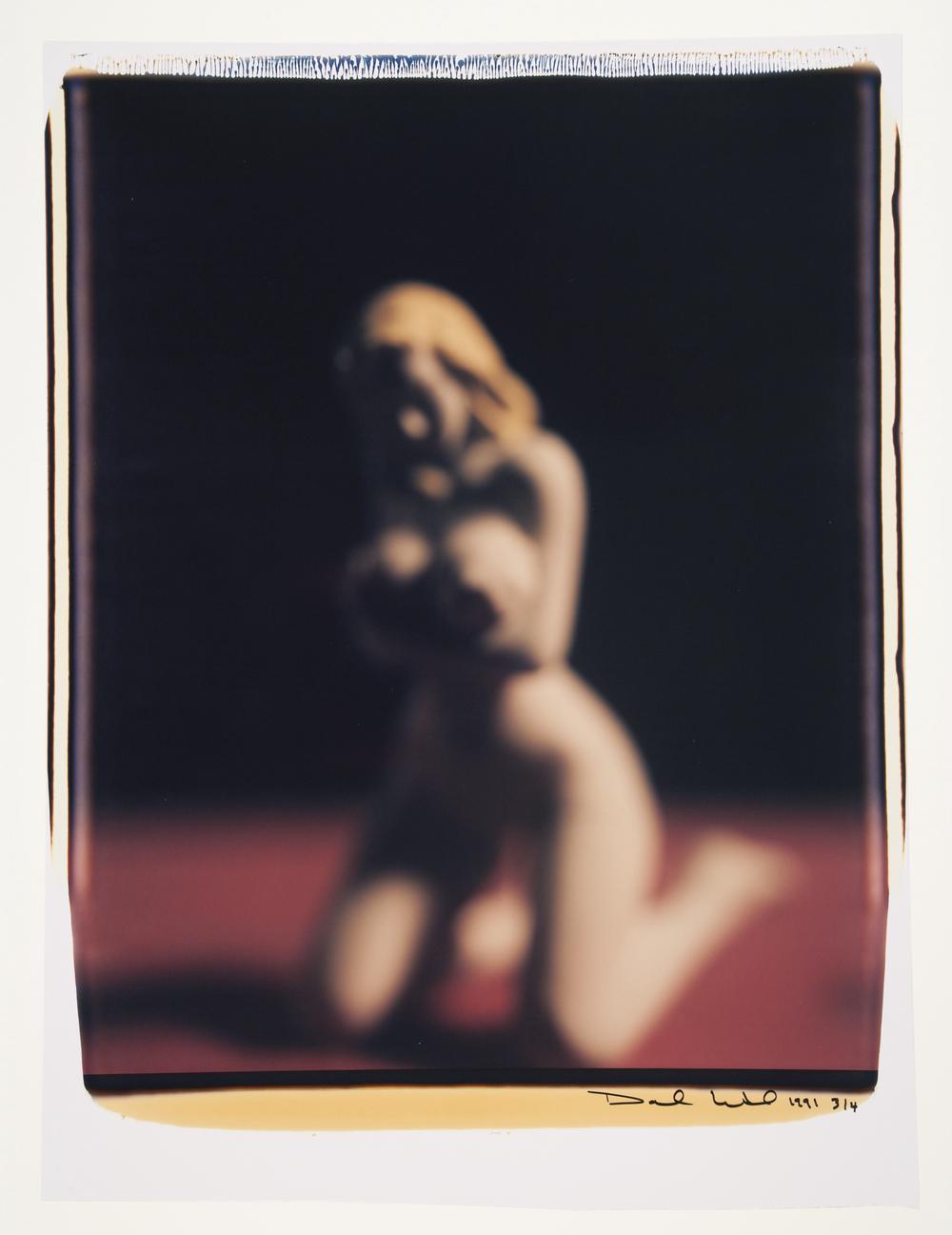David Levinthal. Getting Close

Using a Polaroid camera, which he began working with in 1984, David Levinthal makes soft-focus images in saturated reds and yellows and with ambiguous scale, such as in Untitled (No. 25) from the series “Desire” (1996). He creates a mise-en-scène that, between detail and obscurity, registers as authentic at first, even second glance. Levinthal leaves it up to the viewer to complete the picture from images in our own memory banks. Employing a narrow depth of field with a Polaroid camera came with its own challenges; the artist had to get so close to his subjects that the SX-70 he used early on would knock the figures over when the film ejected. When making the series “Modern Romance” (1983–85), he developed a workaround, focusing a video camera directly on the subject and streaming the image to a monitor. Levinthal then focused his Polaroid on the monitor, shooting his image as it appeared transposed on the screen.1 Despite its multiple mediations, the approximation of realness is uncanny and suggestive of the powerful role media images have on our perception of reality.
Eugenia Parry, “The Great Pretender,” in Modern Romance (Los Angeles: St. Ann’s Press, 2000), 32. ↩︎